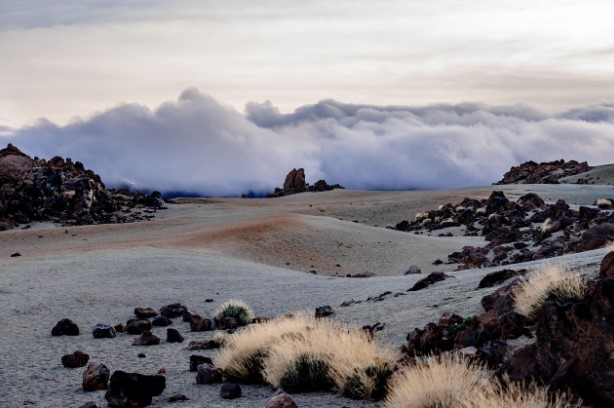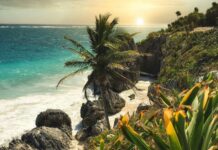Tenerife rewards curious travellers with a mix of Atlantic light, volcanic drama and small-town charm. Its highlights sit within short distances yet feel remarkably varied, from pine forests that scent the air to colourful streets lined with Canarian balconies. The island’s mild climate keeps walking paths accessible year-round, museums lively in all seasons and beaches welcoming whether visitors want a quick dip or a full day by the water.
Away from clichés, Tenerife emerges as a place of stories: ancient routes over black lava, gardens planted by botanists centuries ago, and fishing harbours that still serve catch-of-the-day beside quiet plazas. This guide brings together the places of interest most travellers ask about, showing how to combine them in sensible days out while keeping time for cafés, viewpoints and evening strolls along the seafront promenades.
Must-see places of interest in Tenerife
The north and south feel distinct yet complementary, so it helps to plan by region and mix landscapes with culture. For airport transport and resort connections, public buses cover most corridors, while hire cars suit remoter valleys; for straightforward transport, taxi transfers in Tenerife can be practical when travelling with luggage or at late hours. Base stays in the south offer sun and beaches; nights in the north bring historic quarters and greener scenery.
Teide National Park and volcanic viewpoints
Teide National Park is the island’s natural icon, centred on Spain’s highest peak at 3,718 metres. Crater viewpoints unfold layers of russet and ochre rock, while short trails such as Roques de García reveal twisted lava forms and wide horizons. Those with time can book the cable car to the upper station and choose signed pathways; sunrise and late afternoon bring gentler light and easier parking.
Anaga Rural Park and laurel forests
On the north-eastern tip, Anaga’s misty ridges protect ancient laurel forests, best explored on waymarked footpaths from Cruz del Carmen or Afur. Expect moss-draped trees, narrow lanes and tiny hamlets with terrace farming, plus coastal barrancos that drop to black-sand coves. Roads are winding, so allow time for stops at Mirador Pico del Inglés and tag on a swim at Benijo when seas are calm.
San Cristóbal de La Laguna old town
A UNESCO World Heritage Site, La Laguna is a grid of mansions, convents and courtyards painted in soft pastels. Visitors come for pedestrian streets, churches with Mudéjar ceilings and small museums, then stay for cafés and local bakeries. It is easy to pair with Anaga or Santa Cruz in a single day, and the tram link between La Laguna and the capital streamlines movement without needing to drive.
Santa Cruz de Tenerife culture and coastline
The island’s capital combines civic architecture with a coastal promenade. Highlights include the Auditorio de Tenerife, the lively Mercado de Nuestra Señora de África and the palm-filled García Sanabria Park. Museums present archaeology and fine arts with clear, bilingual displays, and nearby Las Teresitas beach offers golden sand imported from the Sahara and calm waters, ideal for families and relaxed afternoon swims.
La Orotava gardens and historic houses
Terracotta roofs and steep lanes frame one of Tenerife’s most elegant towns. The Casa de los Balcones showcases traditional woodwork, while the Hijuela del Botánico garden shelters exotic species collected during Atlantic voyages. Look for viewpoints across the valley to Mount Teide, then pause in shaded plazas for coffee and pastries. La Orotava pairs neatly with Puerto de la Cruz, just a short drive downhill.
Puerto de la Cruz and Lago Martiánez
Puerto blends a working harbour with promenades and heritage streets. César Manrique’s Lago Martiánez saltwater pools deliver an attractive seafront complex for leisurely hours. Botanical gardens and street art add interest between swims and lunches, and compact dimensions make the town comfortable for walking. Sunset from the old pier or the Punta del Viento balcony gives fine Atlantic colour on clear evenings.
Los Gigantes cliffs and coastal boating
Sheer basalt walls rise up to 600 metres at Los Gigantes, forming one of Tenerife’s most dramatic coastlines. Boat trips skirt the cliffs to hidden coves and seasonal snorkelling spots, and viewpoints above town present broad panoramas towards La Gomera. The marina area has cafés for pre-cruise breakfasts, while nearby black-sand beaches offer safe entries when lifeguards indicate suitable conditions.
Whale and dolphin watching from the south-west
The channel between Tenerife and La Gomera hosts resident pilot whales and several dolphin species. Responsible excursions depart year-round from Costa Adeje and Los Cristianos, with shorter two-hour sailings suiting families and longer trips including swimming stops when conditions allow. Operators brief passengers on guidelines to minimise disturbance, and sightings are frequent, though never guaranteed in wild waters.
Beaches for every style: El Médano, Las Américas, Las Teresitas
South coast resorts supply sheltered coves and long promenades, while El Médano attracts windsurfers and kitesurfers with reliable breezes. Playa del Duque and Fañabé provide calm swimming and sunbeds; Playa de las Américas delivers convenience and nightlife. In the north-east, Las Teresitas shines with gently shelving sand and mountain scenery, and San Andrés village nearby is handy for seafood after a relaxed beach day.
Stargazing and high-altitude landscapes
Clear skies and controlled lighting make Tenerife a superb stargazing destination. Viewpoints on the Teide plateau reveal the Milky Way on moonless nights, and guided astronomy experiences explain constellations and volcanic geology. Daytime visitors can trace lava flows and pumice fields by car between miradores; pack layers, as temperatures drop at altitude even when the coast is warm and beaches feel summery.
Food, wine and the guachinche tradition
Tenerife’s cuisine is rooted in seasonal produce, Atlantic fish and island wines. Guachinches—family-run eateries mainly in the north—serve roasted meats, wrinkled potatoes with mojo sauces and aromatic listán negro reds, often at long tables under vines. In towns, local markets stock cheeses, gofio biscuits and tropical fruit. Vineyard visits around Tacoronte-Acentejo and the Orotava Valley add context to labels seen on restaurant menus.
Seasonal highlights and crowd-smart timing
To balance time at popular spots with quieter discoveries, pick moments well and aim for shoulder seasons when feasible:
- Spring brings wildflowers in high valleys and comfortable temperatures for Anaga walks.
- Summer offers long daylight hours for beach time and late dinners on lively seafronts.
- Autumn and winter deliver crisp views in Teide National Park and reliable sun in the south.
Practical tips for visiting Tenerife’s highlights
Plan days around clusters to cut backtracking, pairing, for example, La Laguna with Anaga, or La Orotava with Puerto de la Cruz. Early starts reduce parking stress at Teide and popular beaches, and midweek visits soften queues at museums. Comfortable footwear helps on lava paths and old-town cobbles; always carry water and sun protection, as UV levels remain high even with a light breeze.Public transport is broadly reliable and cost-effective, with frequent north–south links and coastal routes between resorts. Hiring a car suits travellers exploring rural hamlets or multiple miradores in one day, yet signage is clear and fuel stations are frequent. Weather can vary across microclimates, so check local forecasts, and when seas are rough, opt for inland walks or garden visits until lifeguards raise green flags again.




